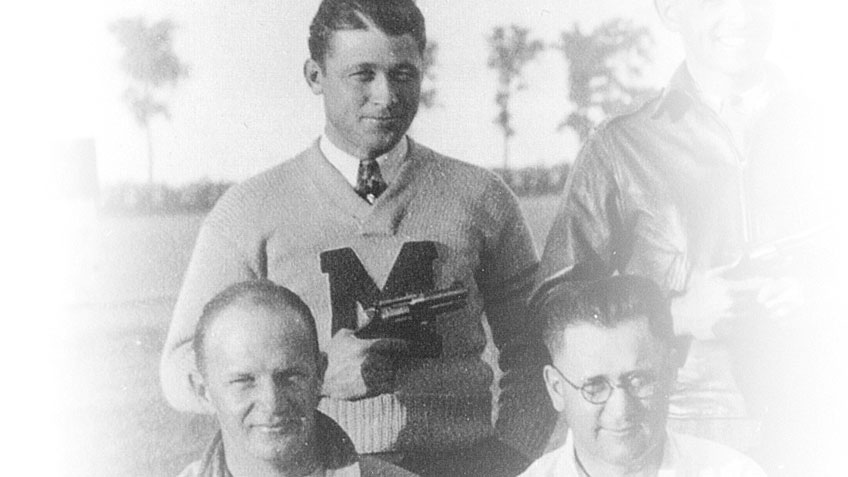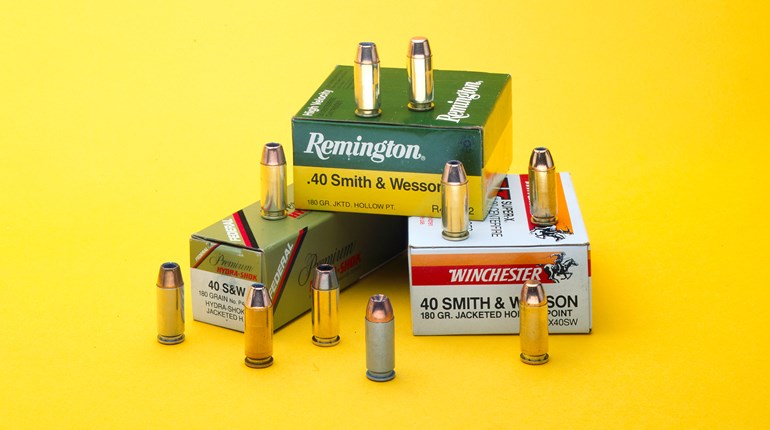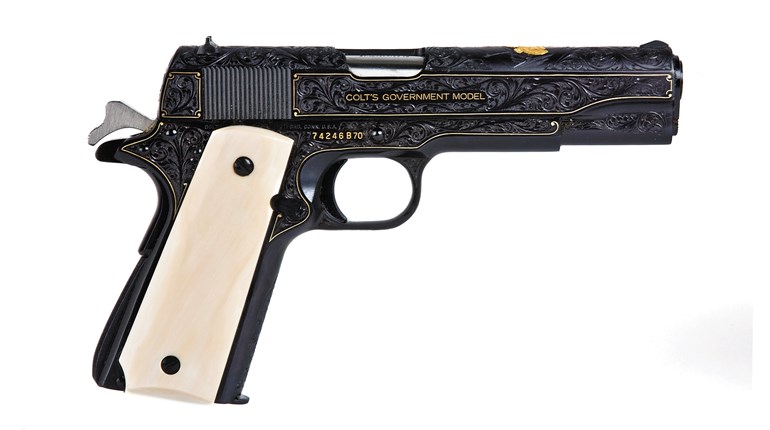
Jelly Bryce was a sharp dresser. Unfortunately, safety wasn’t quite as fashionable as indicated by the finger on the trigger.
He was a well-proportioned young man who stood just under 6 feet tall. As a teen, there was football, track and steady participation in an early form of ROTC training. Above all, the young man loved to hunt and developed a legendary skill with firearms. This was Jacob Bryce, a gunfighter who could put on a mind-boggling exhibition of fast and accurate shooting one afternoon and engage in a blazing firefight with criminals the next. A great many impressive exhibition shooters have come to public attention since the days of Wild West shows, but none put their speed and accuracy to deadly effect in enforcing the law. In this regard, Bryce was unique. He was also widely respected as a police administrator, holding down the job of Special Agent in Charge of several Southwestern FBI field offices. This was a man who always went to work perfectly dressed. Double-breasted suits, sport coats, trousers with razor-sharp creases and always—always—a perfectly folded handkerchief in the breast pocket. Best characterized as “dapper” or “debonair,” Jacob Bryce got his nickname from the slang of the day. He was a “real jelly bean.” To his dying day, he was known as Jelly Bryce.
After a sort of year-long false start as a state game ranger, Jelly Bryce’s shooting skills came to the attention of officers of the Oklahoma City Police Department (OCPD). He was just 22 when they got him a job with the department. Bryce went to work as a detective in the Auto Theft bureau and very quickly got into his first shootout. This was a man who amassed a considerable reputation for deadly shootings, but he did so in a time and place where record-keeping was, at best, marginal. As the gun battles continued to stack up, so did the folklore about Bryce and his skills. It is probably true that he was hired as much for membership in the department pistol team as for his street shooting skill, but OCPD got a bargain. Not only was the young Bryce adept at both competition and combat skills, he also developed into a very competent street cop. In the long run, he also turned out to be an efficient and respected police administrator.
For Jelly Bryce, 1934 rolled around chock-full of promise. The young country cop joined the FBI. It went under a slightly different name in those early years, but Director J. Edgar Hoover chose to staff the growing organization with young, college-educated lawyers and accountants. Realizing the lack of con-wise officers who were skilled with and willing to use firearms when necessary, Hoover recruited a handful of experienced officers. Waiving the mandate for a college degree, he acquired a small group of the best the south and Southwest had to offer—including the Hurt brothers, Charles Winstead and others. Jelly Bryce was one of them. And they went to work immediately. Bank robbery had become a criminal trade, with a number of gangs working the country. All of the country had heard about the famous names—Dillinger, Karpis, Barker—but there were others. Jelly Bryce worked steadily at various field offices of the division. By the time World War II came, he was accepted as a dedicated and effective special agent.
For most of the shooting incidents that he saw, Jelly Bryce used the same gun, a Smith & Wesson .44 Spl. that today’s collectors called the 3rd Model .44 Hand Ejector. One of a large batch commissioned by a Texas firm Wolf & Klar, the big N-frame brought back the underlugged barrel first seen on the elegant Triple Lock. Bryce’s gun was fitted with special carved grips and sported a short, 4-inch barrel. The use of this particular gun is well established, but his preferred ammo remains a mystery. When Smith & Wesson unveiled the .357 Mag. in 1935, he bought one of these legendary guns with a 3.5-inch barrel. Many pictures taken of him doing speed and accuracy demos show him using the Magnum.
Jelly Bryce spent a lot of time developing and teaching his style of shooting at the FBI academy. In law enforcement circles, he was well known as a shooter, teacher and agent. But the general public knew little of the man before he was featured in a Life magazine article in 1945, followed by a longer one in Look in ’46. The FBI approved of his demonstrations for its PR value and he did many. They must have been something to see, including shooting coins thrown in the air and speed draws from concealment in two-fifths of a second. A point-shooter, he did most work from a deep crouch that was taught for years thereafter in FBI-inspired police training.
He was spectacular in his superb eye-hand coordination. Since he was involved in many real gunfights, we can assume he had a steely resolve when facing a lethal confrontation. He may have presided at the demise of as many as 19 felons and that alone makes him unique among peace officers. There have been a number of masters of the trick-shooting game, but few have fired shots in anger to the degree of Jelly Bryce, a man who knew fightin’ iron.



































